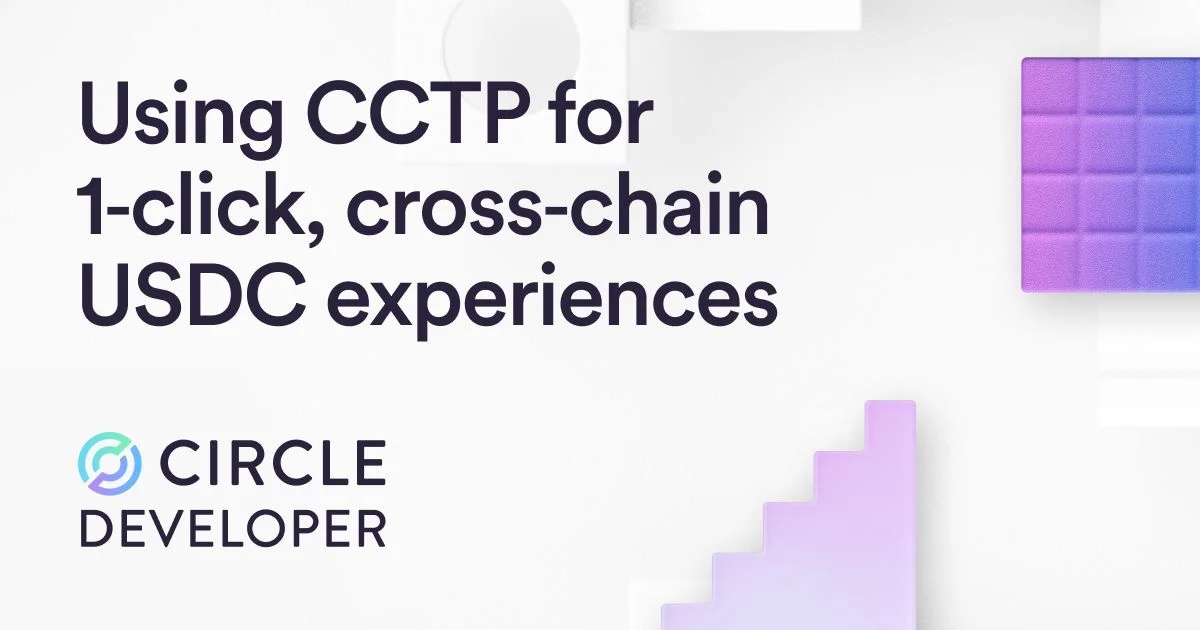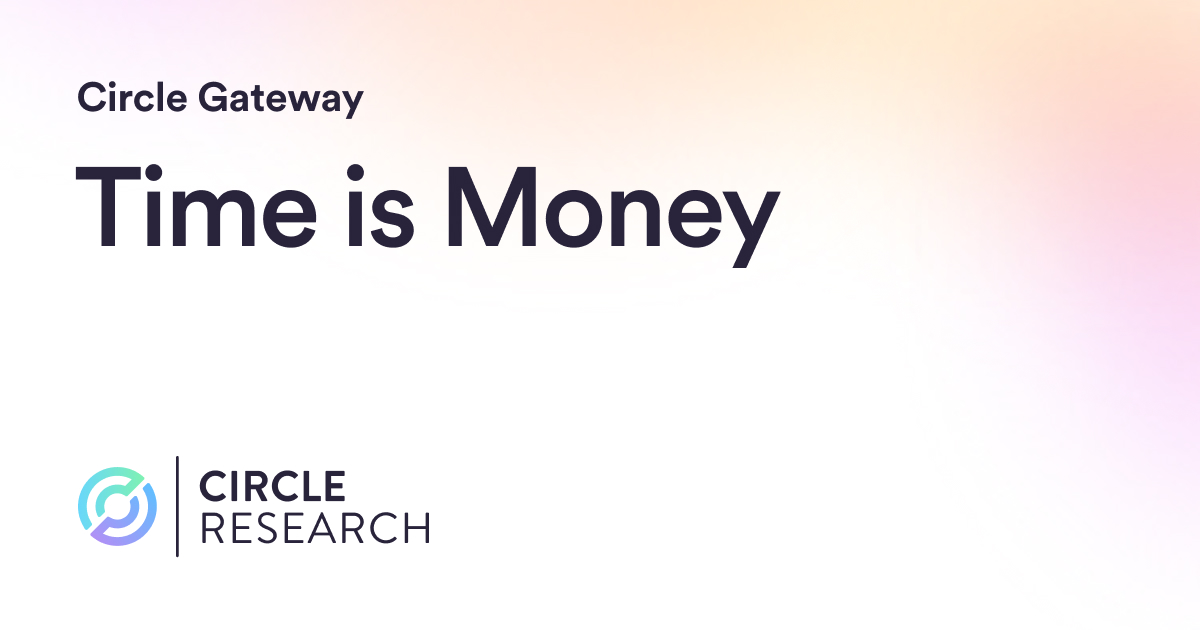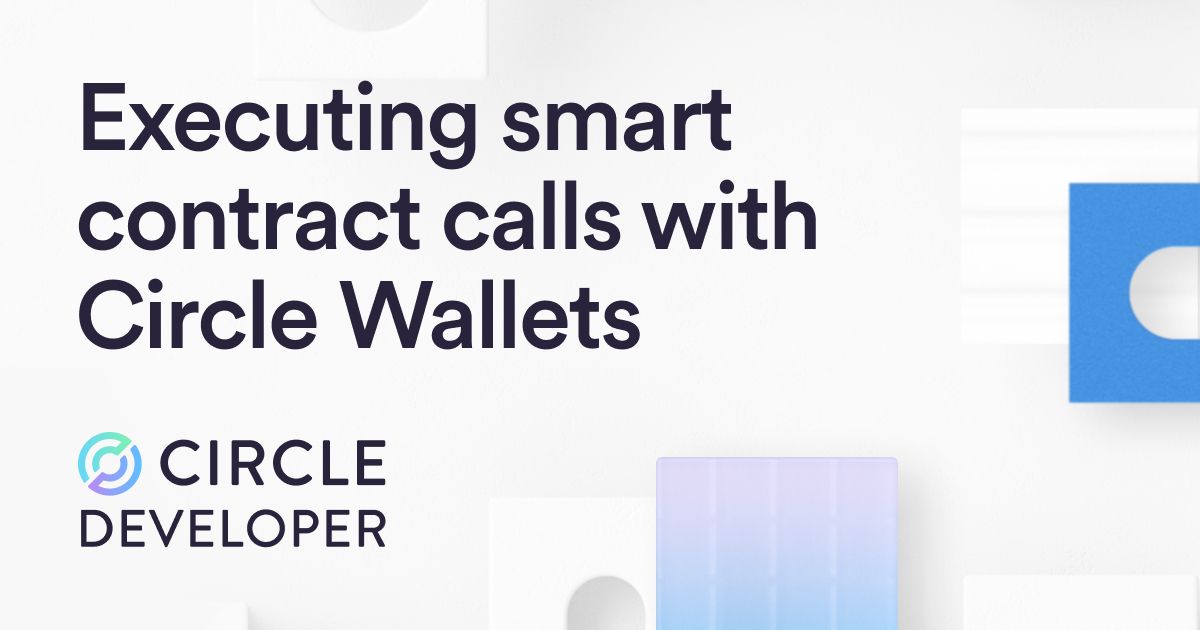Trails, a chain abstraction orchestration protocol for 1-click crypto transactions, uses CCTP to execute crosschain USDC transactions in seconds. Learn how.

Executive summary
- Transfers from minutes to seconds: CCTP Fast Transfer reduces typical USDC transfers from over 15 minutes to under 30 seconds across most supported chains.
- 1‑click orchestration: Trails enables users to pay, fund, or swap using any wallet and any token across any chain—with a single confirmation.
- Pay gas in USDC: Trails enables you to pay for transaction gas in USDC. A fully end-to-end USDC experience from gas, bridging to payments.
- Slippage‑free USDC transfers: Because CCTP moves USDC 1:1 via burn‑and‑mint, the crosschain leg does not depend on AMM pricing or bridge liquidity pools.
- Programmable settlement: With Hooks, transfers can trigger post‑mint actions (e.g., auto‑deposit to DeFi), paving the way for intent‑based UX.
Customer: Trails
Trails is a chain abstraction orchestration protocol for 1-click crypto transactions, enabling anyone to fund, send, deposit, swap, pay, or accept payments in any token, on any EVM chain, using any wallet, and finally eliminating the need for complicated bridges or swaps.
“Integrating Circle’s CCTP into Trails from day one provides crosschain USDC transactions that are fast and reliable. By combining CCTP’s Fast Transfer architecture with Trails’ 1-click orchestration, we’re enabling developers with frictionless USDC mobility across chains, wallets, and applications, and laying the groundwork for Internet-native commerce.” — Peter Kieltyka, CEO and Co-founder at Trails and Sequence.
The problem: Fragmented liquidity degrades checkout experiences
- Users hold value across many tokens, wallets, and chains. Moving funds to an app’s target chain typically requires manual bridging and swapping.
- Each extra step adds time, cost, and drop‑off, especially when crossing chains to reach USDC‑denominated apps or DeFi. Trails offers a 1-click path through that complexity.
- Bridge routes that rely on liquidity pools frequently fail or re‑quote when inventory is insufficient, and they expose users to slippage. This creates variability in delivered amounts and increases abandonment. CCTP was designed to avoid these issues by not requiring pooled USDC on either side of the transfer.
The solution: Trails + CCTP Fast Transfer
Trails aggregates a user’s spending power and orchestrates routes (passthrough if already on the right chain/token; otherwise swap + bridge) so the user confirms once. Under the hood, CCTP performs native USDC burn → attest → mint. Because the destination leg mints USDC 1:1, execution is independent of bridge pool depth and not subject to AMM price impact on the cross‑chain leg, removing slippage and reducing liquidity‑driven failures. With Fast Transfer, Circle’s Attestation Service and Fast Transfer Allowance provide faster-than-finality mints in seconds, while hard finality settles in the background.
What changes for users and developers
Users:
- Complete cross‑chain USDC payments in seconds using any token from any wallet. No manual bridging or swaps.
- Pay gas in any token. Trails introduces stablecoin-based gas payments through Permit-compatible token support (EIP-2612), allowing users to transact with USDC and other notable stablecoins, eliminating one of crypto’s biggest UX hurdles.
- Users receive the exact USDC amount specified (less any disclosed onchain mint fee/gas), with no bridge slippage on the USDC leg.
Developers:
- Accept crypto with access to aggregated buying power; settle on preferred chains, embed swaps and cross‑chain funding, and optionally sponsor gas for a true 1‑click experience.
- Routes no longer hinge on destination pool balances or third‑party fillers. Operationally, you monitor Fast Transfer Allowance and fall back to Standard Transfer as needed.
How it works
- Inspect & plan. Trails evaluates balances and selects passthrough when possible; otherwise it proposes a swap→bridge route that lands in USDC on the destination chain.
- Burn on source. USDC is burned on the origin chain.
- Faster-than-finality attestation. Circle’s Attestation Service signs the burn within seconds, backed by the Fast Transfer Allowance until full settlement is confirmed on the source chain.
- Mint on destination. USDC is minted on the destination chain in seconds; an onchain Fast Transfer fee may apply depending on the source chain.
- Settle & compose. The target payment or contract interaction executes. Hooks can automate post‑mint actions (e.g., deposit to DeFi) with no additional user signatures.
%20(1).png)
What Sequence achieves with Trails + CCTP
- Checkout time reduced. Multi‑step, multi‑minute flows are replaced by single‑confirmation, sub‑30‑second completion, where Fast Transfer is supported.
- “Any‑token” acceptance. Users pay with what they hold; apps settle where they operate.
- Wallet‑agnostic reach. Compatible with Sequence smart wallets and popular third‑party wallets via standard connectors – any signing wallet is supported.
- Slippage eliminated on the USDC leg. The cross‑chain transfer is a 1:1 mint, not a swap, so there is no price impact or re‑quotes due to pool depth.
- Reliability under load. By removing pool‑inventory gating, Trails sees fewer “insufficient liquidity” and “capacity reached” errors common to liquidity‑pool bridges. Fast Transfer capacity is governed by Circle’s Fast Transfer Allowance, not third‑party LPs.
- Operational clarity. Public endpoints enable developers to query allowance and fees, inspect attestations, and manage re‑attestations—critical for routing, reliability, and cost control.
Why this matters
This architecture aligns crypto UX with mainstream expectations: a single intent. For example, “Pay 10 USDC to an app on Base” is executed transparently across swaps, bridging, and settlement with native USDC and faster-than-finality semantics, without synthetic assets or custodial detours.
Use Cases
- Intent‑centric apps: Combine Trails’ single‑signature orchestration with Hooks to deliver true 1-click pay, fund, or swap experiences.
- Faster onramps/offramps: Unify fiat paths with instant onchain mobility for time‑to‑value measured in seconds.
- Programmable commerce: NFTs, games, RWA, and marketplaces can treat chains as one network, settling in USDC wherever liquidity resides.
Call to action
Build 1‑click, crosschain USDC experiences today.
- Learn how CCTP Fast Transfer works and see supported chains, timing, and fees.
- Explore Trails to embed any‑token, any‑wallet checkout and orchestration on any EVM chain in minutes.





